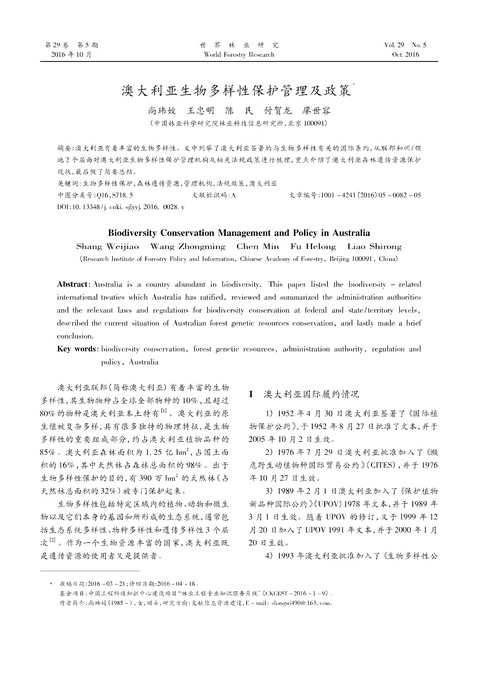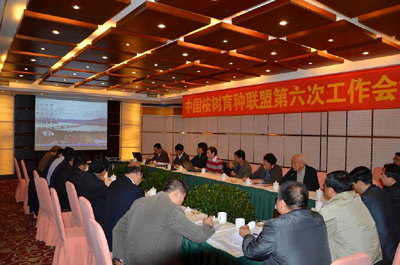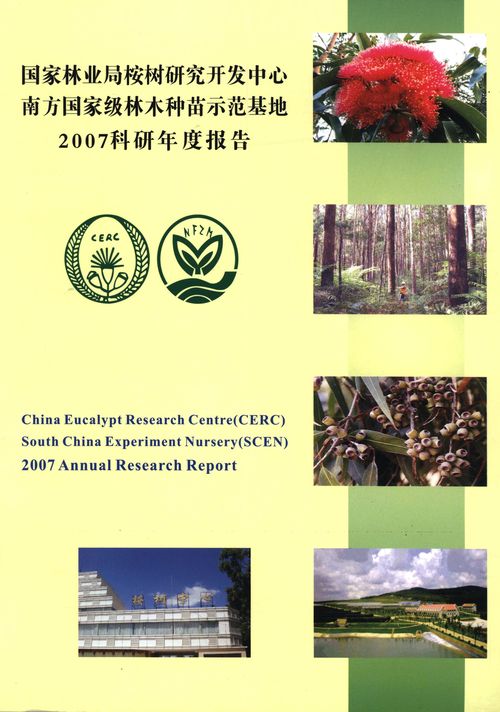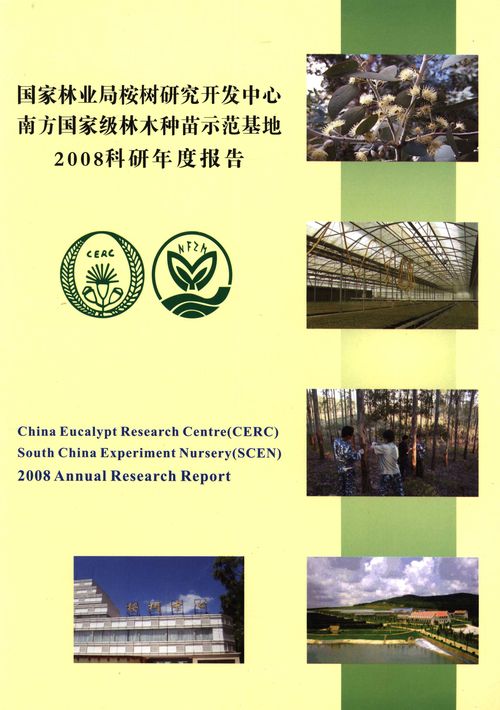
澳大利亚桉树林火灾研究进展
编号
lyqk009537


中文标题
澳大利亚桉树林火灾研究进展


作者单位
1. 西南林业大学土木工程学院,昆明 650224;
2. 云南省森林灾害预警与控制重点实验室,昆明 650224


期刊名称
世界林业研究


年份
2021


卷号
34


期号
4


栏目名称
各国林业


中文摘要
森林火灾是全球范围内最严重的自然灾害和突发性公共事件之一。林火研究的主要驱动力包括植被特点(尤其是大面积人工林,如桉树林等)、火灾风险评估和火前预防、火后恢复以及林火监测的现实需求等。文中从澳大利亚桉树林的火灾发生机制、林火对生态环境的影响、林火时空格局、火管理和火监测—预警—风险评估技术与方法等方面,综述了21世纪以来澳大利亚桉树林火灾研究进展并展望了桉树林火灾未来研究的方向,以期为我国桉树人工林的可燃物管理、林火监测与预警技术等提供借鉴。


关键词
桉树
森林火灾
火环境
火灾风险评估
火灾预警
澳大利亚


基金项目
国家自然科学基金“重大森林火灾驱动下滇中地区景观动态变化机制研究”(31960318);云南省农业联合面上项目“气候变化情景下的滇中地区森林可燃物动态调控机理研究”(2018FG001-055);云南省教育厅科学研究项目“景观廊道对重大森林火灾的影响机制研究”(2020Y0382)


英文标题
Research Progress in Eucalyptus Forest Fire in Australia


作者英文名
Zhang Wenwen, Wang Qiuhua, Wang Ruichen, Long Tengteng, Wei Jianheng, Gao Zhongliang


单位英文名
1. College of Civil Engineering, Southwest Forestry University, Kunming 650224, China;
2. Yunnan Key Laboratory of Forest Disaster Warning and Control, Kunming 650224, China


英文摘要
Forest fire is one of the most serious natural disasters and public emergencies across the world. The main driving forces of forest fire research mainly include the vegetation characteristics (especially large-area plantation, such as eucalyptus forest), fire risk assessment and pre-fire prevention, post-fire recovery and the actual needs of forest fire monitoring. This paper reviews the research progress in Eucalyptus forest fire in Australia since the twenty-first century from the aspects of fire occurrence mechanism, fire impact on ecological environment, temporal and spatial pattern of forest fire, fire management and technology and methods for fire monitoring, early warning and risk assessment, and prospects the future research direction. This study is expected to provide references for fuel management, forest fire monitoring and early warning technology of Eucalyptus plantation in China.


英文关键词
Eucalyptus;forest fire;fire environment;fire risk assessment;fire warning;Australia


起始页码
106


截止页码
111


投稿时间
2020/11/1


最后修改时间
2021/1/28


作者简介
张文文,女,河南周口人,硕士生,主要从事森林防火研究,E-mail:zww819794389@163.com


通讯作者介绍
王秋华,男,福建长汀人,教授,主要从事森林防火研究,E-mail:qhwang2010@swfu.edu.cn


E-mail
zww819794389@163.com;qhwang2010@swfu.edu.cn


分类号
S762


DOI
10.13348/j.cnki.sjlyyj.2021.0004.y


参考文献
[1] OLIVEIRA S, PEREIRA, JOSE M C, et al. Exploring the spatial patterns of fire density in Southern Europe using Geographically Weighted Regression[J]. Applied Geography, 2014, 51(2):143-157.
[2] 魏书精, 罗斯生, 罗碧珍, 等. 气候变化背景下森林火灾发生规律研究[J]. 林业与环境科学,2020,36(2):133-143.
[3] BAKER G B, WEBB A, WHITING P. Regulatory controls for buildings in wildfire-prone areas of Australia[J]. Fire Technology, 2020, 56(3):1903-1935.
[4] 朱敏慧, FEGELY R. 澳大利亚林业/林产品贸易概况及投资机遇[J]. 木材工业,2016,30(1):5-9.
[5] 谢耀坚. 中国桉树育种研究进展及宏观策略[J]. 世界林业研究,2011,24(4):50-54.
[6] HILL K, JOHNSON L. Systematic studies in the eucalypts: 7. a revision of the bloodwoods, genus Corymbia (Myrtaceae)[J]. Telopea, 1995, 6(2/3):185-504.
[7] 王豁然. 桉树生物学概论[M]. 北京: 科学出版社, 2010.
[8] 国家林业局. 中国森林资源报告(2009—2013)[M]. 北京: 中国林业出版社, 2014.
[9] 谢耀坚. 我国木材安全形势分析及桉树的贡献[J]. 桉树科技,2018,35(4):3-6.
[10] 白夜, 朴金波. 不同森林植被类型合成灭火技术分析[J]. 林业科技,2007,32(6):31-33.
[11] JOLLY W M, HADLOW A M, HUGUET K. De-coupling seasonal changes in water content and dry matter to predict live conifer foliar moisture content[J]. International Journal of Wildland Fire, 2014, 23(4):480-489.
[12] LIM E P, HENDON H H, THOMPSON D W J, et al. Australian hot and dry extremes induced by weakenings of the stratospheric polar vortex[J]. Nature Geoence, 2019, 12(4):896-901.
[13] WOOD S W, HUA Q, ALLEN K J, et al. Age and growth of a fire prone Tasmanian temperate old-growth forest stand dominated by Eucalyptus regnans, the world's tallest angiosperm[J]. Forest Ecology and Management, 2010, 260(4):438-447.
[14] MCCAW L, SIMPSON G, MAIR G. Extreme wildfire behavior in 3-year-old fuels in a Western Australian mixed Eucalyptus forest[J]. Australian Forestry, 1992, 55(1):107-177.
[15] ETCHELLS H, DONNELL A J, MCCAW W L, et al. Fire severity impacts on tree mortality and post-fire recruitment in tall eucalypt forests of southwest Australia[J]. Forest Ecology and Management, 2020, 459(6):135-152.
[16] WILLIAMSR S, BRADSTOCKR A. Fire regimes and the management of biodiversity in temperate and tropical Eucalyptus forest landscapes in Australia[J]. Cunninghamia, 2000, 5(2):404-409.
[17] ROMPS D M, SEELEY J T, VOLLARO D, et al. Projected increase in lightning strikes in the United States due to global warming[J]. Science, 2014, 346(6211):851-854.
[18] COUTO F T, LAKUNIN M, SALGADO R, et al. Lightning modelling for the research of forest fire ignition in Portugal[J]. Atmospheric Research, 2020, 242(5):104-113.
[19] GANTEAUME A, GUIJARRO M, JAPPIOT M, et al. Laboratory characterization of firebrands involved in spot fires[J]. Annals of Forest Science, 2011, 68(3):531-541.
[20] BOWD E J, BANKS S C, STRONG C L, et al. Long-term impacts of wildfire and logging on forest soils[J]. Nature Geoscience, 2019, 12(1):113-118.
[21] SHERIDAN G J, LANE P N J, SHERWIN C B, et al. Post-fire changes in sediment rating curves in a wet Eucalyptus forest in SE Australia[J]. Journal of Hydrology, 2011, 409(2):183-195.
[22] PROSSER I P, WILLIAMS L. The effect of wildfire on runoff and erosion in native Eucalyptus forest[J]. Hydrological Processes, 2015, 12(2):251-265.
[23] THOMAS A D, WALSH R P D, SHAKESBY R A. Solutes in overland flow following fire in eucalyptus and pine forests, northern Portugal[J]. Hydrological Processes, 2000, 14(5):1-15.
[24] PELLEGRINI A F A, ANDEREGG W R L, PAINE C E T, et al. Convergence of bark investment according to fire and climate structures ecosystem vulnerability to future change[J]. Ecology Letters, 2017, 20(3):307-316.
[25] LANGEORD K J. Change in yield of water following a bushfire in a forest of Eucalyptus regnans[J]. Journal of Hydrology, 1976, 29(1/2):87-114.
[26] VOLKOVA L, WESTON C. Measuring forest carbon and fire emission from southern Eucalyptus forests: key findings and some lessons learnt[C]. Bushfire CRC and AFAC 2013 Conference Research Forum, 2013.
[27] YIN S, WANG X, GUO M, et al. The abnormal change of air quality and air pollutants induced by the forest fire in Sumatra and Borneo in 2015[J]. Atmospheric Research, 2020, 243(1):105-117.
[28] WU L, TAYLOR M P, HANDELEY H K. Remobilisation of industrial lead depositions in ash during Australian wildfires[J]. Science of the Total Environment, 2017, 599/600(6):1233-1240.
[29] HOWARD D, MACSWEEN K, EDWARDS G C, et al. Investigation of mercury emissions from burning of Australian eucalypt forest surface fuels using a combustion wind tunnel and field observations[J]. Atmospheric Environment, 2019, 202(8):17-27.
[30] BUTLER O M, LEWIS T, Chen C. Prescribed fire alters foliar stoichiometry and nutrient resorption in the understorey of a subtropical eucalypt forest[J]. Plant and Soil, 2016, 410(1/2):1-11.
[31] BARRY K M, NICHOLS S, JANOS D, et al. Can Eucalyptus obliqua seedlings grow well in forest soils not subjected to fire?[C]// Proceedings of the Joint Soil Science Australia and New Zealand Society of Soil Science Conference, Hobart, 2012: 339.
[32] REDDY C S, BIRD N G, SREELAKSHMI S, et al. Identification and characterization of spatio-temporal hotspots of forest fires in South Asia[J]. Environmental Monitoring and Assessment, 2020, 191(Suppl3):791. DOI:10.1007/s10661-019-7695-6
[33] CAWSON J G, DUFF T J. Forest fuel bed ignitability under marginal fire weather conditions in Eucalyptus forests[J]. International Journal of Wildland Fire, 2019, 28(3):198-204.
[34] FENSHAM R J. Interactive effects of fire frequency and site factors in tropical Eucalyptus forest[J]. Austral Ecology, 2010, 15(3):255-266.
[35] YOGENDRA K, KARNA L T, BENNETT. Assessing the legacy effects of wildfire on eucalypt canopy structure of south eastern Australia[J]. Biological and Ecological Engineering, 2018, 12(6):1-29.
[36] WALKER S H, RIDEOUT D B, LOOMIS J B, et al. Comparing the value of fuel treatment options in northern Colorado's urban and wildland-urban interface areas[J]. Forest Policy and Economics, 2007, 9(6):694-703.
[37] VOLKOVA L, BI H, HILTON J, et al. Impact of mechanical thinning on forest carbon, fuel hazard and fire behavior in Alpine ash forest (Eucalyptus delegatensis) of south eastern Australia[J]. Forest Ecology and Management, 2017, 405(9):92-100.
[38] GRIGG A H, NORMAN M A, GRANT C D. Prescribed burning of thinning slash in regrowth stands of jarrah (Eucalyptus marginata) following bauxite mining in south-west Australia[J]. International Journal of Wildland Fire, 2010, 19(6):737-745.
[39] BATTAGLIA M A, ROCCA M E, RHOADES C C, et al. Surface fuel loadings within mulching treatments in Colorado coniferous forests[J]. Forest Ecology and Management, 2010, 260(9):1557-1566.
[40] SLIJEPCEVICl A, MARSDEN-SMEDLEY J B. Fuel characteristics, low intensity burning and loss of carbon during regeneration burning in Eucalyptus obliqua wet forest at the Warra LTER site[C]. Forest Fire Research and Wildland Fire Safety, Portugal. 2002.
[41] VOLKOVA L, WESTON C J. Effect of thinning and burning fuel reduction treatments on forest carbon and bushfire fuel hazard in Eucalyptus sieberi forests of South-Eastern Australia[J]. Science of The Total Environment, 2019, 94(6):1-9.
[42] LIU Y, STANTURF J, GOODRICK S. Trends in global wildfire potential in a changing climate[J]. Forest Ecology and Management, 2010, 259(4):685-697.
[43] MUQADDAS B, LEWIS T. Temporal variations in litterfall biomass input and nutrient return under long-term prescribed burning in a wet sclerophyll forest, Queensland, Australia[J]. The Science of the Total Environment, 2020, 706(1):1-11.
[44] HE H S, KEANE R E, IVERSON L R. Forest landscape models, a tool for understanding the effect of the large-scale and long-term landscape processes[J]. Forest Ecology and Management, 2008, 254(3):371-374.
[45] KINGK J, CARY G J, BRADSTOCK R A, et al. Simulation of prescribed burning strategies in south-west Tasmania, Australia: effects on unplanned fires, fire regimes, and ecological management values[J]. International Journal of Wildland Fire, 2006, 15(4):527-540.
[46] LEON J, REIJNDERS V M J J, HEARNE J W, et al. A landscape-scale optimisation model to break the hazardous fuel continuum while maintaining habitat quality[J]. Environmental Modeling & Assessment, 2018, 24(11):369-379.
[47] GOULD J S, MCCAW W L, CHENEY N P. Quantifying fine fuel dynamics and structure in dry eucalypt forest (Eucalyptus marginata) in Western Australia for fire management[J]. Fuel and Energy Abstracts, 2011, 262(3):531-546.
[48] WHITE B L A, WHITE L A S, GENESIO T R. Evaluation of forest fire danger indexes for eucalypt plantations in Bahia, Brazil[J]. International Journal of Forestry Research, 2015, 2015(1):1-6.
[49] TORRES R, JUAN M. Index for the estimation of the occurrence of forest fires in large areas[J]. Revista Chapingo Serie Ciencias Forestales y del Ambiente, 2020, 26(3):315-331.
[50] MCCARTHY N F, GUYOT A, PROTAT A, et al. Tracking pyrometeors with meteorological radar using unsupervised machine learning[J]. Geophysical Research Letters, 2020, 47(8):226-234.
[51] ALMEIDA M, VIEGAS D X, MIRANDA A I, et al. Effect of particle orientation and of flow velocity on the combustibility of Pinus pinaster and Eucalyptus globulus firebrand material[J]. International Journal of Wildland Fire, 2012, 20(8):946-962.
[52] SHUGART H H, NOBEL I R. A computer model of succession and fire response of the high-altitude Eucalyptus forest of the Brindabella Range, Australian Capital Territory[J]. Austral Ecology, 2010, 6(2):149-164.
[53] MARQUES S, GARCIA-GONZALO J, BORGES J G, et al. Developing post-fire Eucalyptus globulus stand damage and tree mortality models for enhanced forest planning in Portugal[J]. Silva Fennica, 2011, 45(1):69-83.
[54] PLUCINSKI M P, SULLIVAN A L, RUCINSKI C J, et al. Improving the reliability and utility of operational bushfire behaviour predictions in Australian vegetation[J]. Environmental Modelling and Software, 2017, 91(5):1-12.
[55] VAN L T T, VAND W G R, HOFFMANA A A, et al. Biomass burning fuel consumption rates: a field measurement database[J]. Biogeoences, 2014, 11(24):7305-7329.


发布日期
2021-02-02


PDF全文
浏览全文


-
相关记录
更多
 打印
打印







